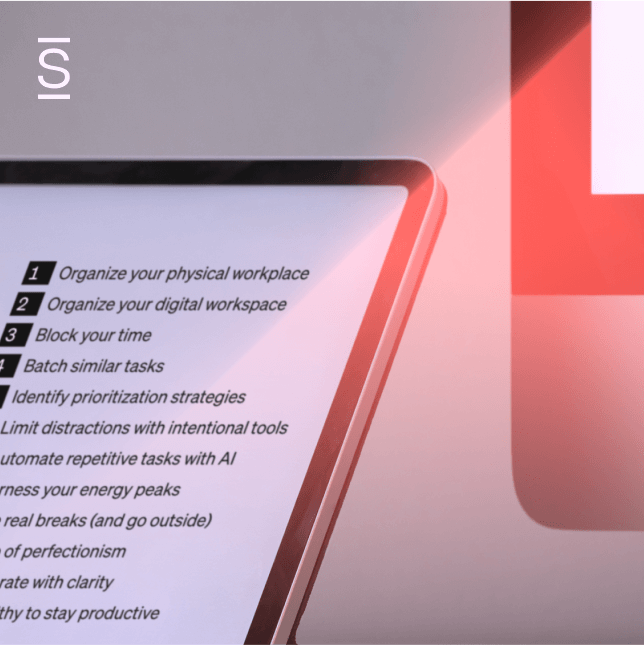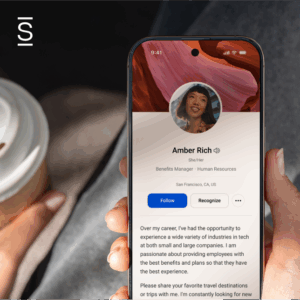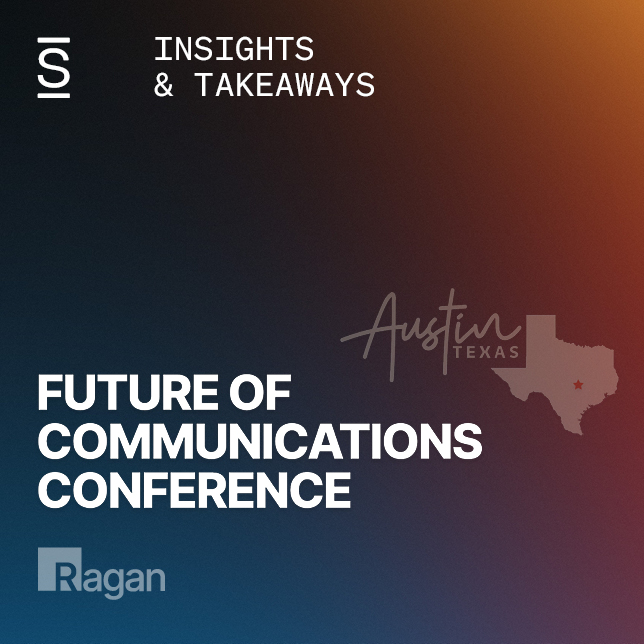Simpplr is introducing an innovative Live EX platform feature to transition into a new era of Internal Communications. The new reality is that the world of internal communications is evolving. The effects of the COVID-19 pandemic changed the employee experience. Many workers found themselves isolated, and leaders had to learn to institute technological changes to cross those divides and provide clarity around organizational priorities and values.
In response, we will produce a series of articles about the secret to great internal communications that help build a culture of caring and improve the employee experience. In this series, we will share thoughts, insights, and the effects of each step on your company, business, or organization. In Part 1, we featured the need to “Communicate With Precision and Purpose.”
Here is Part 2.
Leadership is not relegated to management, the executive level, or the C-suite. Anyone can be a leader. However, the ability to lead with purpose lies in the intent of the leadership. It goes beyond peer relationships, advice, and opinion. Leadership in a grander scheme is where you have a vested interest in the individual, the team, and the organization’s value and success. To be at that leadership level, one must possess key characteristics, education, and experiences that contribute to the governance of businesses and companies. One of the greatest attributes is listening.
The ability to listen is something that is often lost in an expansive environment, such as an enterprise-sized company. One-on-one or even in a group setting, listening can be controlled if you can pay attention and dial into the exchange of information. Adding in “virtual leadership” and distance, time, and culture impediments can make listening even more difficult. Thank goodness for technological advances that cultivate and increase communication and listening to a new art form. Still, there are other barriers to listening.
The act of listening in any form is considered one of the highest indicators of a person’s ability to lead. Still, listening is not always understood as its definition is often confused. Some leaders find listening taxing and even beneath them. But before we dive deeper into these issues around listening, let’s discuss the definition of “listen.”
Defining Listen
Many believe that the word “listen” pertains only to hearing a sound. In actuality, it includes action. The Oxford English Dictionary defines listening as to “take notice of and act on what someone says; respond to advice or a request.” Going further, it stated that it is to “make an effort to hear something; be alert and ready to hear something” and used to “urge someone to pay attention to what one is going to say.” In other words, “Listen” is both a reactive and proactive response to hearing. However, does the definition and act of listening change or take on new meaning depending on the subject or the environment?
Listening is one of the most important skills an individual can have. It is beyond being silent when others speak. You must be able to both receive the information, interpret it accurately, and participate cognitively in a response. Some call it “fully conscious, active participation.” So, listening incorporates hearing, which is of the senses, and the mind. You could say there is an entire process to the act of listening.
- Reception
- Comprehension
- Recall or remembering
- Analysis and assessment
- Feedback
From the time we are young, we are guided in the process of listening, whether through verbal or non-verbal communication. There is both an innate and learned aspect to this process. As teachers or parents, we are encouraged to teach children active listening in early childhood. The Center for Disease Control (CDC) has issued essential guidelines for implementing and encouraging this behavior.
- Give your full attention to your child
- Make eye contact and stop other things you are doing
- Get down on your child’s level
- Reflect or repeat back what they are saying and what they may be feeling to make sure you understand
As you can see, there is an action to every step in the listening process. When demonstrated, especially by repeating words back to them (i.e., a form of employee feedback), they begin to emulate it in their own personal behavior. Could you consider transposing this type of listening behavior into the business or work setting?
- Give your full attention to your colleague or employee
- Make eye contact and stop multitasking
- Listen and be receptive to the other person’s perspective
- Repeat what you heard as both a measure to understand and indicate you understood the other individual
In Dale Carnegie’s book “How to Win Friends and Influence People,” Carnegie recalled a conversation with the former president of Harvard, Charles W. Eliot. Eliot stated that there is no higher form of adulation in an interview or conversation than actively listening. He said, “There is no mystery to successful business intercourse…Exclusive attention to the person who is speaking to you is very important. Nothing else is so flattering as that.” However, listening was not merely the action of hearing or the involvement of the mind inclined to the individual speaking. It also involved body language that indicated the entire person was engrossed in the conversation.
That should be an example for every leader when having a discussion with a single individual, a small group, or an entire organization. The art of listening involves the whole human person connecting to another. And it is in that process of connection that comprehension and reciprocation can be made.
Can you imagine this happening between a leader and an employee?
Listening in the Workplace: The Leader
According to an article published by the Center for Creative Leadership, there are three essential facts about the communication of leaders.
- Authenticity counts — a lot.
- Visibility is a form of communication.
- Listening is a powerful skill.
Listening is often the most forgotten part of communication. Good leaders will utilize the communication they give and receive to gauge that what they have provided is both understandable and understood. Part of that is managing the ego.
Leadership naturally comes with forms of isolation. The more senior the position, the more inaccessible they are from the rest of the company. It also comes with power and ego. In the HBR article “Ego Is the Enemy of Good Leadership,” David Owen, the former British Foreign Secretary, and a neurologist, and Jonathan Davidson, a professor of psychiatry and behavioral sciences at Duke University, call this the “hubris syndrome.”
While in an insulated bubble, leaders can succumb to this “disorder of the possession of power, particularly power which has been associated with overwhelming success, held for a period of years.” As a result, the ego “corrupts our behavior” and narrows the vision. Leaders with the “hubris” mindset tend to surround themselves with people who will not challenge them to listen. Yet, listening is the mark of a good leader. How do you solve this issue?
Billionaire Businessman Richard Branson, the founder of the Virgin Group Ltd., stated, “Listen more than you talk.” In the Forbes article, “Three Ways To Nail What Sir Richard Branson Cites As His Top Leadership Soft Skill,” the writer explained that “the benefits of listening are numerous.
Active listening demonstrates respect, builds trust, and makes people feel valued. It creates a virtuous cycle: we naturally gravitate toward those who listen to us, and when we feel heard, we open up and share. Active listening also allows leaders to learn about things both good and bad, so they can discover new ideas and opportunities as well as to detect—and get creative about solving—potential problems when they’re still in their infancy.” And as Richard Branson said, “nobody learned anything by hearing themselves speak.”
Referring back to the HBR article, listening “requires selflessness, reflection, and courage.” There is nothing more selfless than listening to the advice of another person. There is nothing more reflective than waiting on another person’s response. And it takes courage for a leader to choose.
In the book “The CEO Test” by Adam Bryant and Kevin Sharer, the authors explained that “the art of listening for leaders is one part mindset—the discipline of pushing aside all distractions and judgments in the moment to listen purely for comprehension—and one part commitment to create systems and processes on all fronts to elevate the idea of “active listening” to one of hypervigilance.”
According to Kevin Sharer, former president, CEO, and chairman of Amgen, the world’s largest biotechnology company, “It’s not just about listening to the person across the table from you,” Kevin says. “Listening is actually being alert to the whole ecosystem in which you operate. The signals come to you with varying intensity from varying sources.”
Listening also implies a time waiting before the response. The philosopher Henri Neuman once said, “Waiting is a period of learning. The longer we wait, the more we hear about him for whom we are waiting.”
Stop and think about that. How often do we as leaders wait properly for enough information to create a picture of the need and want of our employee before completing the process of action? More plainly, how much time do we need to receive information? How much time do we need to act? Both are listening, and responding to your employees is about timing. And that is something that you may not have in abundance.
Listening in the Workplace: The Employee
Every person has a story, and everyone wants to matter. It is part of who we are as human beings. When in a conversation with a leader, such as a ‘1:1 meeting’ or a “Coffee with the CEO,” having undivided attention, being listened to, and being celebrated for who you are, impacts the employee. It adds to their story. It builds an experience of connection and celebrates the relationship of potentiality. The employee believes not only in the leader but in themselves and the value they bring to the company.
An employee who feels inclusive in a work environment is more likely to be engaged in the job and company culture. But as an employee, what should they be doing to encourage listening in their daily actions? As reported in many scientific studies, listening in the workplace is central to a positive workplace environment by elevating communication.
Many companies are incorporating listening classes to create a more cohesive team relationship, a sense of togetherness, and becoming more open-minded, which, in turn, facilitates increased well-being, creativity, and clarity. In the “Annual Review of Organizational Psychology and Organizational Behavior,” the study “The Power of Listening at Work” showed that the quality of listening has potent effects in the workplace. The researchers Avraham N. Kluger and Guy Itzchakov found positive outcomes in performance, leadership, relationships, job knowledge, job attitudes, well-being, and other employee-focused outcomes. There were two main implications to listening in job performance:
- Listening leads to positive performance outcomes for listeners, speakers, and consequently, the organization.
- Listening is arguably a facet of job performance, even if it is not perceived or measured as such by organizations.
Referring back to the book “The CEO Test,” a story related by the author recounted an off-site team-building exercise. When tasked with the assignment of creating a charter for their executive team, the employees first asked their CEO to leave the room. Next, they put together bullet points of what they wanted to accomplish as a team. One of the top results was, “We debate like we’re right, listen like we’re wrong, and then decide, commit, and lead together.”
Once again, listening implied opening one’s mind to the input of outside ideas—a type of diversity and inclusivity motion.
There are many ways to demonstrate listening in the workplace. A recent Glassdoor blog listed the benefits of active listening in your job. “Active listening is an essential part of creating positive relationships at work. People tend to gravitate toward active listeners because they feel valued and respected when talking with them. Active listening can also help you get the most out of a conversation. It’s a skill that helps you absorb more information and process what another person says. It helps you focus on important conversations and avoid the chance of zoning out on what your colleague or employer shares.”
As an employee, your purpose is to fulfill the organization’s needs. If they have been transparent in your role description, you contribute to their business outcomes and success by performing your job function. They, in turn, should recognize your contributions, both in compensation and celebration. But if you do not listen, the effects are counterproductive. That is why many leaders and management find value in storytelling.
As stated before, everyone has a story. Storytelling is as ancient as civilization itself. It can tell us about the individual or the community. But more than not, stories are used to teach a lesson that is worth listening to. In Simpplr’s Cohesion podcasts, several guests who are leaders in diverse fields believe in and utilize the storytelling methodology. One such leader was Laura Klieves, the Senior Director of L&D and Comms at Malwarebytes, a global internet security company that provides cyber protection for consumers, businesses, and organizations.
Laura found that understanding any communication goes beyond speaking the words and delivering the information. It is about getting people to believe the message you present and buy into it. That is the essence of storytelling—creating core messages woven into demonstrable stories that people will remember.
The second part of storytelling is recalling and recognizing the message. In other words, a comprehension check. For the virtual leader
The hope is that the ecosystem you work in is one of mutual beneficial listening and proactive recognition. In such a place, it truly is in collective feedback and reception that growth happens. It delivers success for all. Everything and everyone must work together to better each other and the organization. In doing so, everyone participates in leadership in some form.
It sounds almost utopian. But on the roadmap to this perfect work environment, listening comes in all forms. One of the most important is feedback, and it can be both verbal and data. It can be sentiment surveys and polls. It can come from leadership and peers. To attain this type of feedback, and if you are listening to solve problems and issues, you first need to ask the right questions.
Asking the Right Questions
“If I had an hour to solve a problem and my life depended on the solution, I would spend the first 55 minutes determining the proper question to ask, for once I know the proper question, I could solve the problem in less than five minutes.” –Albert Einstein
It is not being suggested that you solve a problem in five minutes or that you have to have the brilliance of Einstein to solve your problems. However, it is advisable that you take on asking the right questions of your employees as if your life “depended on the solution.” In this case, it is the life of your business, your company culture, and your employee experience.
As a leader or employee, you are in a vital position to create a type of environment where all who work with you can thrive and succeed. Even an employee can have that type of impact? Yes!
However, you must ask what others want and what they need from you to provide them with information beyond the basics.
In the HR Daily Advisor article “Asking the right questions is key to finding the right answers,” Don Oswald stated that “It’s more important to ask the right questions than it is to always have the answer.” Questions are necessary for both listening and business. You could say they are a part of life itself. They help cultivate relationships, mitigate problematic issues, and develop what is necessary to grow your company. However, you will not learn what is pertinent and vital to the matter at hand without the right questions.
There is also the issue of people not asking the right question because they do not want to know the answer or are afraid of the response. But you will never become an effective leader without learning to ask the right question, learning from the wait, and acting on the answer.
When asking questions, remember to wait for the answer, even if the answer comes in the form of data, surveys, or polls. But do you always have time when a response is needed immediately? Also, can you put your preconceived ideas aside from what they might say? Waiting means needing the correct answer. If you cannot have patience in listening and waiting or cannot cull the correct data, then it was a waste of time to ask the question in the first place.
Action is the application of what was learned from the asked question. Success comes from fulfilling the outcome. Being responsible for seeing the process through to the end is what a leader should be doing when they hear from their employees. Leaders must also convince their employees of the authenticity of their message.
If questions are a skill, then answers to questions are the value derived from learning that skill. An HBR article titled “The Surprising Power of Questions” stated that “Questioning is a uniquely powerful tool for unlocking value in organizations: It spurs learning and the exchange of ideas, it fuels innovation and performance improvement, it builds rapport and trust among team members. And it can mitigate business risk by uncovering unforeseen pitfalls and hazards.”
Feedback comes in many forms. There is, of course, the verbal. Then, there is the sentiment survey. Data can be enlightening to leaders. It demonstrates what people may want to express but do not have the capacity to either speak it or transpose it into writing directly to management. Lastly, just as you can communicate by what you don’t say, when you find out that your employees are not opening your email or not reading messages, it indicates your failure to communicate. All of this should be considered when you initiate the messaging process.
Simpplr believes in the exchange of ideas and information. It also assumes that time is of the essence on some occasions, especially in regards to feedback. If leadership does indeed experience insularity, then perhaps technology can be the bridge.
However, this gleam of hope comes with a hazard warning. We have found that by the time execution breakdowns show up in your surveys, performance tools, and financial systems; it’s already too late. Leaders must be able to tap into “the heartbeat of their organization” at any moment to see the hidden opinions, emotions, attitudes, motivation, and employee experience. That is why we are so excited about our new LiveEX functionality on our Simpplr internal communications platform. Imagine real-time feedback. But even with this type of technological advancement, there is the caveat of the individual’s ability to listen to the communication and act on it. This motion causes us to ask if we, as leaders in all forms, are willing to do just that. How we communicate, listen, and act proves who we are. And we hope you want to be the best in all you do.
As the author, Idowu Koyenikan said in the book “Wealth for All: Living a Life of Success at the Edge of Your Ability,” “The type of person you are is usually reflected in your business. To improve your business, first, improve yourself.”
In our next article, we will cover how listening without action is just hearing. There is no value in it, and then the employee feels undervalued and will disengage and possibly look elsewhere for validation.

















